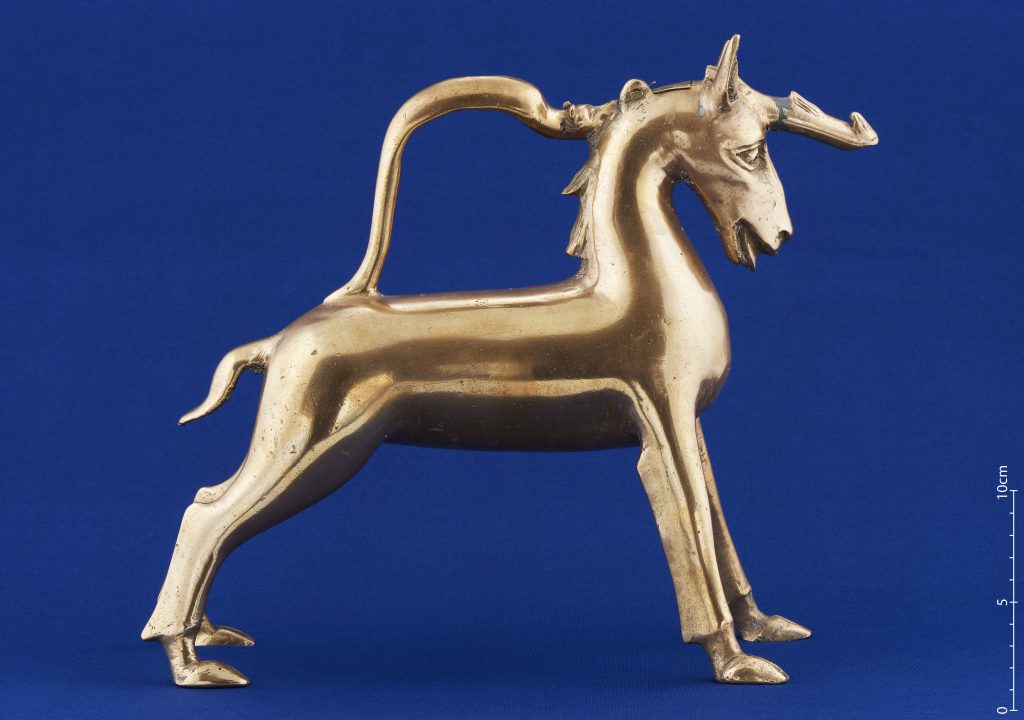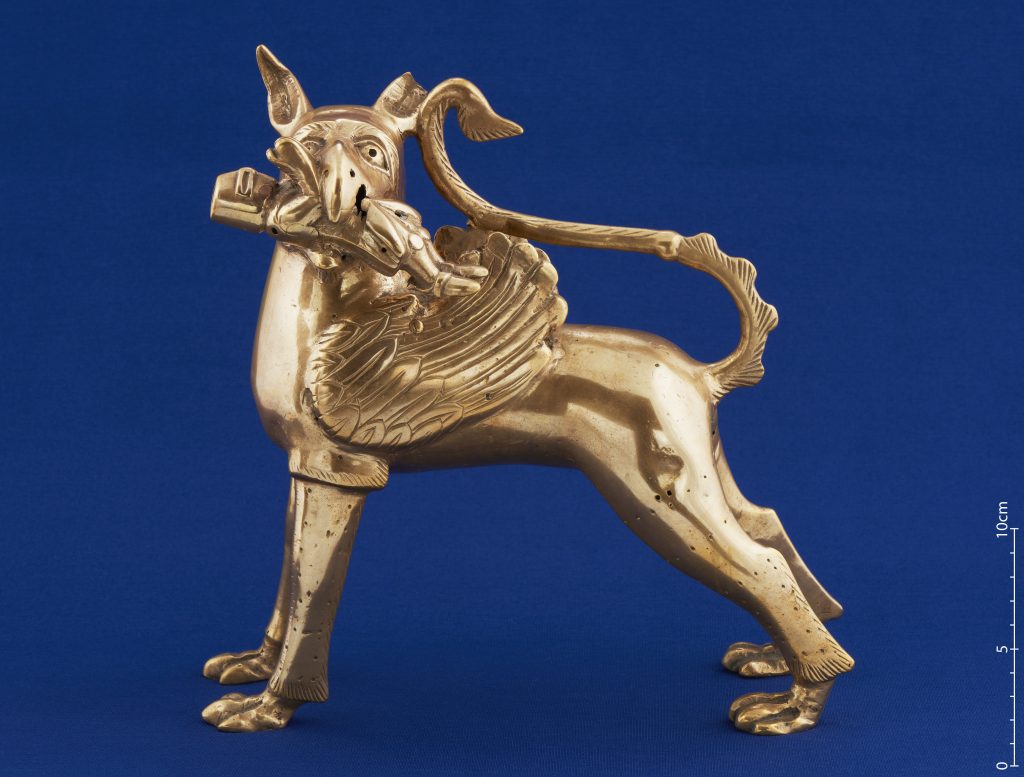
Ritual rules prescribed that priests should wash their hands before and after Communion, as a sign of purity and to prevent any crumbs of the consecrated Host from becoming desecrated. To this end, a special vessel was used, called an aquamanile (aqua=water, manus=hand), which usually took the shape of an animal carrying associations with physical or moral threat. Aquamaniles spread throughout Europe in a variety of forms and figures. The example from Øvre Eiker (MA 69) takes the striking form of a bulky-bellied duck with a vertical nozzle on its back mounted by a four-footed animal. It was traditionally believed to be a German product, like all other aquamaniles in the Bergen collection, but the duck shape has more recently led to the assumption that it originated much earlier (in the ninth or tenth century) in the Islamic world (Persia?).

The aquamaniles in the shape of a griffin and a unicorn were probably produced in Lübeck during the first half of the fourteenth century. The griffin, a creature with the body of a lion and the head and wings of an eagle, originates from Strinda (MA 67). It has its head turned towards the left and holds a small knight in armour in its beak. The griffin symbolises the devil who takes away the human soul, visualised by the knight’s supplicating posture. The unicorn, shaped as a horse with a horn on its forehead, stems from Molde (MA 68). This mythical animal stood for combattiveness and courage and could, according to legend, only be tamed by a virgin. A bow-shaped snake between the head and tail serves as a handle, the horn on his head as spout.

The older lion, with a split tongue as a spout, was found in Leikanger (MA 148) and was probably also produced in Lübeck during the first half of the fourteenth century. It has been related to the workshop of Johannes Apengeter in that city. The younger one, which stems from Melhus, wears a coat of arms representing its donor on its breast and has an S-shaped spout in its beak. A slender, dragon-like creature on its back serves as a handle. This example is considerably younger – late fifteenth or early sixteenth century – and may have been produced in Braunschweig.
Northern Germany, 14th to early 16th century, and Persia, 10th century (?) (MA 69)
From Melhus (Trøndelag) (MA 68), Molde (Romsdal) (MA 67), in the museum since 1825; Strinda (Trøndelag) (MA 68), in the museum since 1837; Øvre Eiker (Buskerud) (MA 69), in the museum since 1837; Leikanger (Sogn) (MA 148), in the museum since 1869
Copper alloy
H varying from 27-29 cm
Inv. nos. MA 66, MA 67, MA 68, MA 69, MA 148